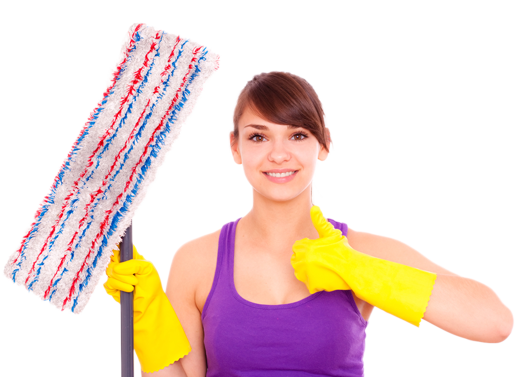Stay Ahead of Mold with These Bathroom Maintenance Tips
Posted on 15/08/2025
Stay Ahead of Mold with These Bathroom Maintenance Tips
Mold in bathrooms isn't just an unsightly nuisance - it's a serious health hazard and can result in costly damage if ignored. Bathrooms, with their high humidity and warmth, create the perfect breeding ground for mold and mildew. If you're looking to keep your sanctuary spotless and safe, it's essential to prioritize bathroom mold prevention and maintenance. Read on for a comprehensive, up-to-date guide packed with actionable tips to help you stay ahead of mold growth in your bathroom.

Why Mold Thrives in Bathrooms
Understanding why mold develops in bathrooms is the first step to stopping it in its tracks. Mold spores need moisture, warmth, and a food source (like soap scum, wood, or drywall), making bathrooms their favorite room in the house.
- Constant Humidity: Steamy showers and poor ventilation leave surfaces damp.
- Lack of Sunlight: Natural light helps inhibit mold, but many bathrooms have small or no windows.
- Poor Air Circulation: Stagnant air allows dampness to linger and settle on surfaces.
- Organic Material: Grout, wood, dust, and soap scum are ideal for mold spores to feed on.
So, how do you get ahead of this persistent problem? By being proactive and adopting a routine that discourages moisture and eliminates musty mold before it has a chance to grow!
The Hidden Dangers of Bathroom Mold
Mold doesn't only ruin the appearance and structural integrity of your bathroom--it can also jeopardize your health. Black mold (Stachybotrys chartarum) and other mold species release spores and possibly mycotoxins, leading to symptoms such as:
- Allergic Reactions: Sneezing, runny nose, watery eyes
- Respiratory Illnesses: Worsening of asthma, coughing, or wheezing
- Skin Irritation: Rashes or itchiness from spore contact
- Headaches and Fatigue: Especially for vulnerable groups or with prolonged exposure
Preventing mold in your bathroom is essential not just for aesthetics but for your family's wellbeing.
Essential Bathroom Maintenance Tips to Prevent Mold
1. Boost Bathroom Ventilation
Adequate ventilation is your first line of defense against mold. Ventilation removes humid air and reduces moisture levels quickly.
- Install or Upgrade an Exhaust Fan: Make sure it vents outside, not into the attic, and use it during and after showers for at least 20-30 minutes.
- Open Windows: If your bathroom has a window, crack it open to let fresh, dry air in.
- Leave Doors Ajar: Leaving the door open after using the bathroom allows moisture to dissipate.
2. Use a Dehumidifier or Humidity Sensor
For bathrooms without windows or in humid climates, consider a small dehumidifier. This tool can efficiently keep humidity below 50%, a crucial step in avoiding mold in bathrooms.
- Humidity Sensor Switches: Install devices that automatically turn on the fan when humidity is high.
3. Wipe Down Surfaces Regularly
Water lingers on tiles, shower doors, wall grout, and fixtures--prime real estate for mold spores.
- After Every Shower: Use a squeegee to remove excess water from walls and doors.
- Dry Sinks and Counters: Especially in high-use bathrooms, wipe water from around sinks and countertops at least once daily.
4. Clean and Replace Caulking and Grout
Grout and caulking are notorious for trapping moisture and soap scum, which support mold growth.
- Regular Scrubbing: Clean tile grout and caulking weekly using an old toothbrush and an anti-mold cleaner or a vinegar solution.
- Re-Caulking: If you see black or pink stains that won't go away, remove old caulk and replace it with mold-resistant silicone caulk.
5. Fix Leaks Immediately
Small leaks under sinks, toilets, or in walls can foster hidden mold colonies.
- Inspect Plumbing: Check pipes, taps, and toilet bases for visible leaks monthly.
- Address Drips: Don't ignore even minor leaks--fix or call a plumber right away.
- Monitor Water Usage: Spikes in your water bill can indicate undetected leaks.
6. Optimize Bathroom Design for Mold Prevention
Smart renovation decisions can make a world of difference in mold-prevention.
- Choose Mold-Resistant Paint: Special bathroom paints contain additives that discourage mold growth.
- Install Large Tiles: More tile and less grout means fewer spots where mold can take hold.
- Opt for Solid Surfaces: Nonporous materials like glass shower doors, quartz counters, or vinyl flooring don't trap moisture as easily.
7. Remove and Launder Fabric Items Frequently
Rugs, towels, and shower curtains easily trap moisture--clean and dry them regularly to avoid mold.
- Hang Towels: Spread towels out to air dry rather than leaving them balled up or on the floor.
- Machine Wash Fabric Shower Curtains and Mats Weekly: Use hot water and dry them thoroughly before reuse.
- Choose Mold-Resistant Shower Liners: These liners resist fungal growth and are easy to wipe clean.
8. Clean Drains and Prevent Clogs
Clogged shower or sink drains allow water to pool, increasing the risk of mold.
- Clear Hair and Debris Weekly: Use a drain snake or enzyme cleaner to keep drains flowing freely.
- Flush Drains Monthly: Pour hot water or white vinegar down the drain to clean residue and deter microbial growth.
9. Control Clutter and Storage
Overcrowded shower caddies, cabinet shelves, and corners make cleaning harder and promote mold in hidden spaces.
- Limit Product Storage: Store only essentials in the shower; bottles and loofahs can block air flow and trap water.
- Declutter Shelves: Regularly go through cabinets for expired products--less clutter means fewer surfaces for mold.
Natural Mold Prevention and Cleaning Methods
Worried about exposing your family or the environment to harsh chemicals? You can prevent and remove bathroom mold naturally with everyday household products.
- White Vinegar: Spray full-strength vinegar onto surfaces, let sit for an hour, then wipe away. Vinegar kills up to 82% of mold species.
- Baking Soda: Dissolve a teaspoon in a spray bottle of water. Spray, scrub, and rinse--it cleans and absorbs moisture.
- Tea Tree Oil: Mix a teaspoon of tea tree oil with a cup of water. Spray on surfaces for a natural fungicide boost.
- Hydrogen Peroxide (3%): Spray directly on moldy areas, let bubble for 10 minutes, then scrub and rinse.
Repeat these methods weekly or as needed to keep surfaces fresh and mold-free. Always test a small area first to ensure no discoloration or damage.
Long-Term Prevention: Establish a Bathroom Maintenance Routine
The secret to staying ahead of mold in your bathroom is consistency.
Weekly Bathroom Mold Prevention Checklist:- Run ventilation fans during every shower or bath
- Open windows or doors to improve air flow
- Wipe tiles, shower doors, and counters to remove water
- Launder towels, mats, and shower curtains
- Inspect and wipe down grout and caulking
- Declutter surfaces and empty out damp or expired products
- Clean drains to prevent standing water
Monthly Deep Clean: Dedicate time to scrubbing tile grout, inspecting caulk, deep cleaning fixtures, and checking for leaks.
When to Call a Professional
DIY methods are perfect for minor mold outbreaks, but if you notice:
- A musty odor that persists even after cleaning
- Mold growing behind walls, under flooring, or inside vents
- Signs of water damage, crumbling drywall, warped wood, or peeling paint
- Health symptoms that worsen indoors
It's time to consult a licensed mold remediation expert. Significant mold infestations may require removal of affected materials and advanced treatment that only professionals can provide.

Frequently Asked Questions About Bathroom Mold Maintenance
What causes mold to come back after cleaning?
Even if you scrub mold away, lingering moisture or water leaks will cause it to return. Using bleach alone may hide stains without killing spores. Ensure surfaces dry completely and fix any plumbing problems to fully resolve the issue.
Is it safe to use bleach on bathroom mold?
Bleach can lighten mold stains, but it doesn't always penetrate porous grout or kill roots. For a safer, eco-friendly approach, try vinegar, baking soda, or hydrogen peroxide.
Can mold-resistant paint and caulk really help?
Yes--specialty paints and caulks contain fungicides that slow down mold growth. These are especially useful in bathrooms and other humid environments.
How do I keep mold from growing on my shower curtain?
Always spread the curtain out fully after each use, wash it weekly, and consider switching to a mold-resistant liner for easier maintenance.
Key Takeaways: Stay Ahead of Bathroom Mold for a Healthier Home
- Mold thrives in wet, poorly ventilated bathrooms.
- Improve ventilation, use dehumidifiers, and eliminate standing water daily.
- Prioritize cleaning, routine maintenance, and prompt repair of leaks.
- Adopt mold-resistant materials and eco-friendly cleaning agents for best results.
A proactive approach to bathroom maintenance not only keeps mold at bay but also extends the life and beauty of your bathroom. With these effective, easy-to-follow tips, you'll enjoy a sparkling-clean, fresh-smelling, and most importantly, a healthy bathroom for years to come.
Stay one step ahead of bathroom mold--start your maintenance routine today!




